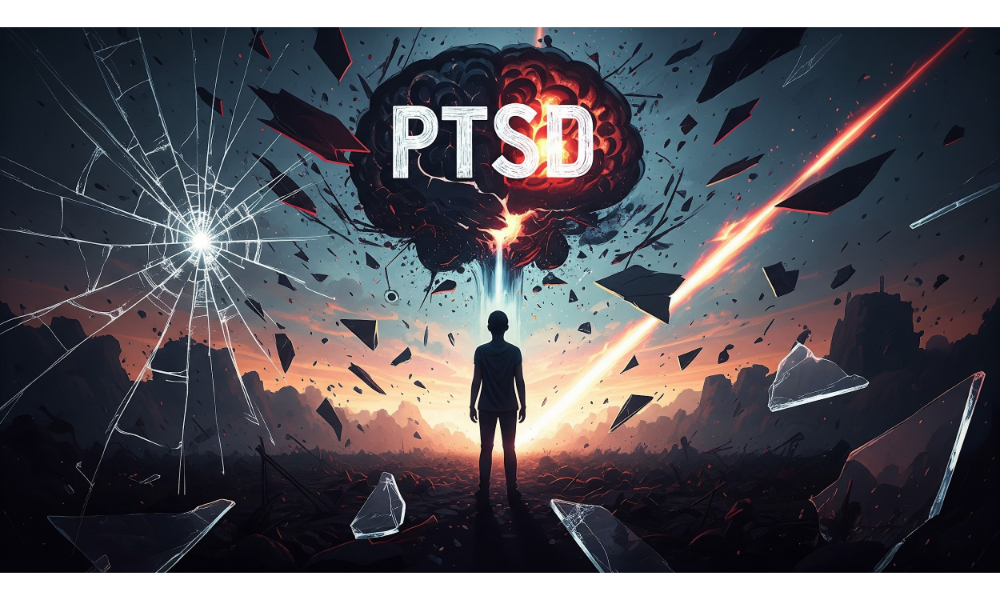
Introduction: When Emotional Trauma Hurts Physically
PTSD is more than emotional distress—it often shows up in the body as real, chronic pain. For many, trauma leaves behind not just psychological scars but also persistent physical symptoms that are often misunderstood or overlooked. This isn’t merely a coincidence; there is a profound link between PTSD and the nervous system that can amplify pain signals, making them feel more intense and pervasive.
Understanding this connection starts with acknowledging that emotional trauma can have significant physiological impacts. When your mind is in distress, your body often follows suit, resulting in a myriad of physical symptoms that can be perplexing and exhausting. It’s crucial to recognize these symptoms are not imagined—they are very real and require proper care and attention.
By exploring the intricate relationship between PTSD and physical pain, you can better appreciate the importance of comprehensive treatment approaches that address both the mind and body. This article aims to shed light on how PTSD can amplify pain signals, making them more challenging to manage, and offers insights into effective treatment strategies.
PTSD and the Brain-Body Connection
The brain-body connection in PTSD is a multifaceted topic that involves several neurological and physiological processes. PTSD is known to alter brain structures, particularly those responsible for stress response and emotional regulation. This alteration can lead to a heightened state of alertness, where your body is perpetually braced for danger, even in the absence of actual threats.
This constant state of hyperarousal can result in the body’s pain threshold being significantly lowered. When your brain is consistently signaling danger, it can cause your nervous system to amplify pain signals. This means that what might be a minor discomfort for someone without PTSD can feel overwhelmingly painful to someone living with the condition.
Furthermore, the brain’s neurotransmitters, which are responsible for communication between nerve cells, can be disrupted by PTSD. This disruption can lead to an increased sensitivity to pain, making it crucial to connect with a PTSD therapist who understands the complexities of these brain-body dynamics. Effective therapy can help recalibrate these systems, reducing both emotional and physical symptoms.
Why Pain Feels Worse with PTSD: Understanding Central Sensitization
Central sensitization is a phenomenon where the central nervous system becomes more sensitive to stimuli, resulting in an amplified perception of pain. In individuals with PTSD, this heightened sensitivity can be particularly pronounced. The stress and anxiety associated with PTSD can exacerbate central sensitization, making everyday aches and pains feel significantly worse.
Understanding central sensitization requires an appreciation of how chronic stress impacts the nervous system. When you’re under stress, your body releases stress hormones like cortisol, which can alter the way your nervous system processes pain. This means that even normal, non-painful stimuli can be perceived as painful, a condition known as allodynia.
Effective management of central sensitization involves a multidisciplinary approach. It’s not enough to treat the psychological aspects of PTSD; you must also address the physical symptoms. This might include pain management strategies, such as physical therapy or medications that target nerve pain. Working with a team of healthcare professionals can help you develop a comprehensive treatment plan that addresses both the psychological and physical aspects of your condition.
Fatigue and Brain Fog: How PTSD Drains Your Energy
Living with PTSD often comes with a pervasive sense of fatigue and brain fog that can make daily tasks feel insurmountable. This fatigue is not just about feeling tired; it’s a profound exhaustion that affects both your physical and mental capabilities. The constant state of hyperarousal associated with PTSD can lead to disrupted sleep patterns, which only exacerbates the feeling of fatigue.
Brain fog, a common symptom for many with PTSD, can make concentration and memory retention difficult. This cognitive impairment is often linked to the body’s stress response, which, when activated repeatedly, can interfere with normal brain function. When you’re in a constant state of alert, your brain is working overtime, leaving little energy for other cognitive processes.
Evaluating fatigue is an essential step in managing PTSD symptoms. You may benefit from fatigue evaluation through the Workwell CFS test, which offers insights into the biological impact of PTSD-related exhaustion. Addressing fatigue may involve lifestyle changes, such as improved sleep hygiene and nutrition, as well as targeted therapies that focus on reducing stress and anxiety.
Auditory Overload: When PTSD Affects Hearing
Auditory overload is a lesser-known symptom of PTSD that can significantly impact your quality of life. This condition occurs when the brain becomes overwhelmed by sounds that others might find normal or even soothing. For someone with PTSD, these sounds can be perceived as threats, leading to anxiety and discomfort.
This heightened sensitivity to sound is often linked to the same central sensitization processes that amplify pain signals. The brain’s inability to filter out irrelevant stimuli means that even minor noises can become unbearable. This can lead to a condition known as tinnitus, where you experience ringing or buzzing in the ears without any external source.
Finding solutions to auditory overload is vital, and it often requires the expertise of an audiologist. Hearing care tailored to those with PTSD might include sound therapy or cognitive behavioral strategies that help retrain the brain’s response to sound. If you’re experiencing these symptoms, it’s important to find out more about hearing solutions in Southern Maine or your local area and seek professional audiological evaluation and support.
Multidisciplinary Diagnosis: It’s Not Just “All in Your Head”
When seeking relief from the complex symptoms of PTSD, a multidisciplinary diagnosis can make all the difference. It’s crucial to understand that the symptoms you experience are not merely psychological—they have tangible physical manifestations that require a comprehensive approach to treatment. This involves a team of professionals who are versed in both mental health and physical health domains.
A multidisciplinary team might include a PTSD therapist, a pain specialist, a sleep expert, and an audiologist, among others. Each professional brings a unique perspective and expertise, allowing for a more comprehensive understanding of your condition. This collaborative approach can lead to more effective treatment plans that address the full spectrum of your symptoms.
Understanding that it’s not “all in your head” is a liberating realization for many. By acknowledging the physical components of PTSD, you can pursue a more balanced treatment plan that addresses both the emotional and physical aspects of your condition. This holistic approach can lead to better outcomes and a more manageable daily life.
Real Solutions: Treatment Paths Beyond Talk Therapy
While talk therapy is a vital component of PTSD treatment, it’s essential to recognize that it is not the only solution. Effective management of PTSD often requires a combination of therapies that address both psychological and physical symptoms. This might include medication, lifestyle changes, or alternative therapies such as mindfulness or yoga.
Medications can play a crucial role in managing PTSD symptoms, particularly when it comes to reducing anxiety and depression. Your healthcare provider might prescribe antidepressants or anti-anxiety medications to help regulate your mood and reduce the overall burden of your symptoms. These medications can also help alleviate some of the physical symptoms associated with PTSD.
Alternative therapies, such as mindfulness meditation or yoga, can provide additional relief by helping you manage stress and improve your overall well-being. These practices encourage relaxation and can reduce the body’s stress response, leading to a reduction in both psychological and physical symptoms. Incorporating these practices into your treatment plan can be a powerful tool in your recovery journey.
The Importance of Validation and Integrated Care
Validation is a critical component of effective PTSD treatment. Recognizing that your pain and symptoms are real is the first step toward healing. Validation from healthcare providers, loved ones, and even yourself can provide a sense of relief and encourage you to seek the care you need.
Integrated care is key to managing the complex symptoms of PTSD effectively. This approach involves coordinating various healthcare services to provide comprehensive care. By integrating mental health treatment with physical health services, you can receive more holistic care that addresses the full range of your symptoms. This might include coordinated care between your PTSD therapist, primary care physician, and any specialists involved in your treatment.
The journey to recovery is often a long and winding one, but with the right support and resources, you can effectively manage your symptoms and improve your quality of life. Remember, seeking validation and integrated care is not a sign of weakness—it’s a proactive step toward healing and well-being.
Conclusion: Your Pain Is Real—And Treatable
In conclusion, the link between PTSD and amplified pain signals is a complex but critical aspect of understanding the condition. Recognizing that your pain is real and not just “in your head” is the first step toward effective management. By addressing both the psychological and physical symptoms, you can work toward a more balanced and fulfilling life.
The journey to recovery involves a comprehensive approach that includes therapy, medication, and lifestyle changes. It’s important to explore all available treatment options and find what works best for you. Remember, you don’t have to navigate this journey alone—reach out for support and connect with healthcare professionals who understand the complexities of PTSD.
If you or someone you know is struggling with PTSD and its associated symptoms, consider reaching out to a professional for support. Connect with a PTSD therapist to explore therapeutic options that can help manage both the emotional and physical aspects of the condition. By taking action, you can embark on a path toward healing and improved well-being. Your pain is real, and with the right care, it is treatable.




